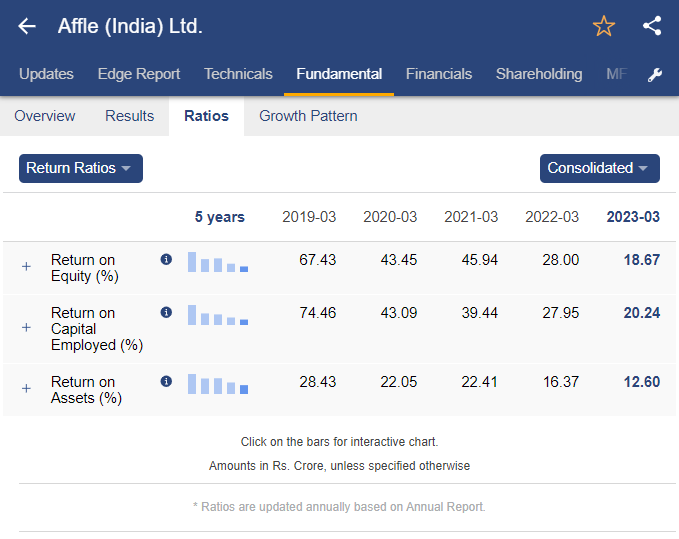20 Great Ideas For Deciding On AI Stock Trading Websites
20 Great Ideas For Deciding On AI Stock Trading Websites
Blog Article
Top 10 Tips To Evaluate The Strategy Customization Of Ai Stock Forecasting And Analyzing Trading Platforms
The ability to tailor the trading platform according to your goals in trading and risk tolerance and market conditions are one of the key features of AI-based stock prediction and analysis trading platforms. Platforms that offer a variety of customizable options can help you improve your trading. Here are 10 great suggestions to help you assess the platform's ability to customize your strategy
1. Evaluate Pre-Built Strategy Templates
The variety of templates available: Find out whether the platform has various pre-designed strategies to suit different styles of trading (e.g. swing trading, day trading, long-term investment).
You are able to easily alter the templates and tailor them to meet your requirements.
Performance history: Determine whether you have access to historical data of the performance of the pre-built strategies.
2. Examine Custom Strategy Creation
Drag-and-drop tools: Look for platforms that offer intuitive drag-and-drop interfaces to create customized strategies.
Coding Options: If you are an advanced user, be sure that your platform supports customized coding.
Flexibility. You must define the key elements like the parameters for risk management, entry and exit regulations, as well as any other elements that make up your strategy.
3. Check for Backtesting Capabilities
Historical data: Make sure that the platform has enough historical data to test your strategies.
Flexible settings: Ensure you have the capability to change parameters during backtesting.
Performance metrics: Find out if the platform provides detailed measurement of performance (e.g. win rate, Sharpe ratio drawdown) for backtested strategies.
4. Evaluate Real-Time Strategy Testing
Paper trading: Ensure the platform has the option of paper trading or simulation to test strategies in real time without taking risks with capital.
Live testing: Test your strategies on live markets using tiny amounts of capital to determine their performance.
Real-time Adjustments: Check whether you can adjust your settings in real time, based upon market conditions.
5. Examine the integration using technical indicators
Indicator Library: Determine if the platform has an indicator library for technical indicators (e.g. moving averages, RSI or MACD).
Custom indicators: Ensure you can import or create custom indicators to match your strategies.
Examine the combinations of indicators.
6. Check for Risk Management Tools
Stop-loss/take-profit: Ensure the platform allows you to set stop-loss and take-profit levels within your strategies.
Size of the position: Determine whether you're able to establish rules for sizing positions (e.g. fixed amount or percentage of the portfolio) to control the risk.
Risk-reward-ratio: Check the platform's support for setting the risk/reward ratios of individual trades or strategies for trading.
7. Evaluate Multi-Asset Strategy Support
Asset classes: Check that your platform is able to support multiple asset classes, including ETFs, stocks and options.
Cross-asset strategies: See whether you are able to create strategies that involve various types of assets (e.g. pairs trading, hedging).
Market coverage: Determine if the platform offers the services you require (e.g. US, international or copyright).
8. Assess Automation and Execution
Automated trading: Ensure that the platform supports automated execution of strategies based upon predefined rules.
Types of orders: Examine to see if your platform permits different types of orders (e.g. limit or market) in the course of executing a strategy.
Latency: Ensure that the platform has a minimal latency for trading, particularly if you employ high-frequency strategies.
9. Look for tools to optimize your strategy.
Parameter Optimization: Check whether the platform provides tools to optimize the parameters of strategies (e.g. genetic algorithms, grid search).
Machine learning integration. See whether your platform is compatible with machine learning in order to improve and refine strategies.
Scenario Analysis: Check whether the platform allows testing strategies in various market scenarios (e.g. bull, bear and volatile).
Review User Comments
User reviews: Read user feedback in order to assess the platform's ability to adapt strategies.
Community forums - Check for if a platform has a community that is active and in which users can share their custom strategies.
Support resources: Ensure that the platform has tutorials, webinars, or documents which will assist users in developing and optimize their strategies.
Bonus Tips
Trial period: Take advantage of a free trial or demo to test the platform's strategy customization features.
Scalability is crucial. The platform needs to be able handle strategies that are more complex as your trading grows.
Customer support: Check if the platform can provide assistance with strategy-related issues or queries.
These suggestions will allow you to assess the options for customization of AI trading platforms that predict/analyze the performance of stocks. This way you'll be able choose one that matches your goals in trading, and allows you refine and apply your strategies. A platform that has powerful customization options will allow you to adapt to changing market conditions and improve your trading performance. View the recommended best stocks to invest in info for site examples including ai copyright signals, best ai for trading, stock analysis app, stocks ai, chart ai for trading, ai day trading, stock ai, ai stock prediction, ai trading platform, stock predictor and more.
Top 10 Suggestions When Evaluating Ai Trading Platforms To Evaluate Their Social And Community Features As Well As Their Community
Analyzing the community and social aspects of AI-driven stock prediction and trading platforms is crucial for understanding how users communicate, share knowledge and learn from one another. These features can enhance the user experience as well providing valuable support. These are the top 10 tips to assess social and community aspects on such platforms.
1. Active User Community
Tips: Ensure that the platform is active and is regularly engaged in discussion, sharing insights or offering feedback.
Why: An active community is a sign of a healthy community where people can learn and grow.
2. Discussion Forums and Boards
You can assess the effectiveness of a discussion forum or message board by evaluating the amount of activity.
Forums are a forum for users to post and discuss questions, share strategies and debate market trends.
3. Social Media Integration
TIP: Check if the platform is compatible with other social media platforms (e.g. Twitter and LinkedIn) to provide news and information.
Why social media integration can increase engagement and offer actual-time market information.
4. User-generated Content
Search for features that permit you to share and create content. For example, articles, blogs or trading strategies.
What's the reason? User-generated content fosters an environment of collaboration, and provide diverse perspectives.
5. Expert Contributions
TIP: Check if the platform includes contributions from industry experts like market analysts and AI specialists.
The reason: Expert opinions add authenticity and depth to the community conversations.
6. Chat and Real-Time Messaging
Find out if there is instant messaging or chat options which allow users to chat instantaneously.
Why: Real-time interaction facilitates rapid information exchange and collaboration.
7. Community Modulation and Support
Tips Assess the degree of the moderation and customer service in the community.
What is the reason? Moderation that is effective helps create a peaceful and positive atmosphere. Help is readily ready to address issues swiftly.
8. Events and Webinars
Tips: Check if your platform hosts live sessions, Q&As or webinars.
Why: These events offer opportunities to engage in direct conversation and interaction with professionals from the industry.
9. User Feedback and Reviews
Find options that give users to give reviews and feedback on the platform or the community functions it offers.
The reason: Feedback from users can help to identify areas of strength and areas for improvement within the community environment.
10. Gamification and Rewards
Tips - Make sure to check whether your platform offers games (e.g. leaderboards, badges) or rewards given for active participation.
Gamification can encourage users to be more engaged with the platform and its community.
Bonus Tip on Privacy and Security
To ensure the security of data users as well as their activities, make sure that social and community features are protected by secure security and privacy controls.
You can assess these features to determine whether the AI trading and stock prediction platform provides the community you need and helps you trade. See the most popular great post to read for website tips including ai bots for trading, ai copyright signals, ai for trading, investing in ai stocks, best ai copyright to buy, ai trading tools, best stocks to buy now, stock ai, ai for stock trading, investing ai and more.